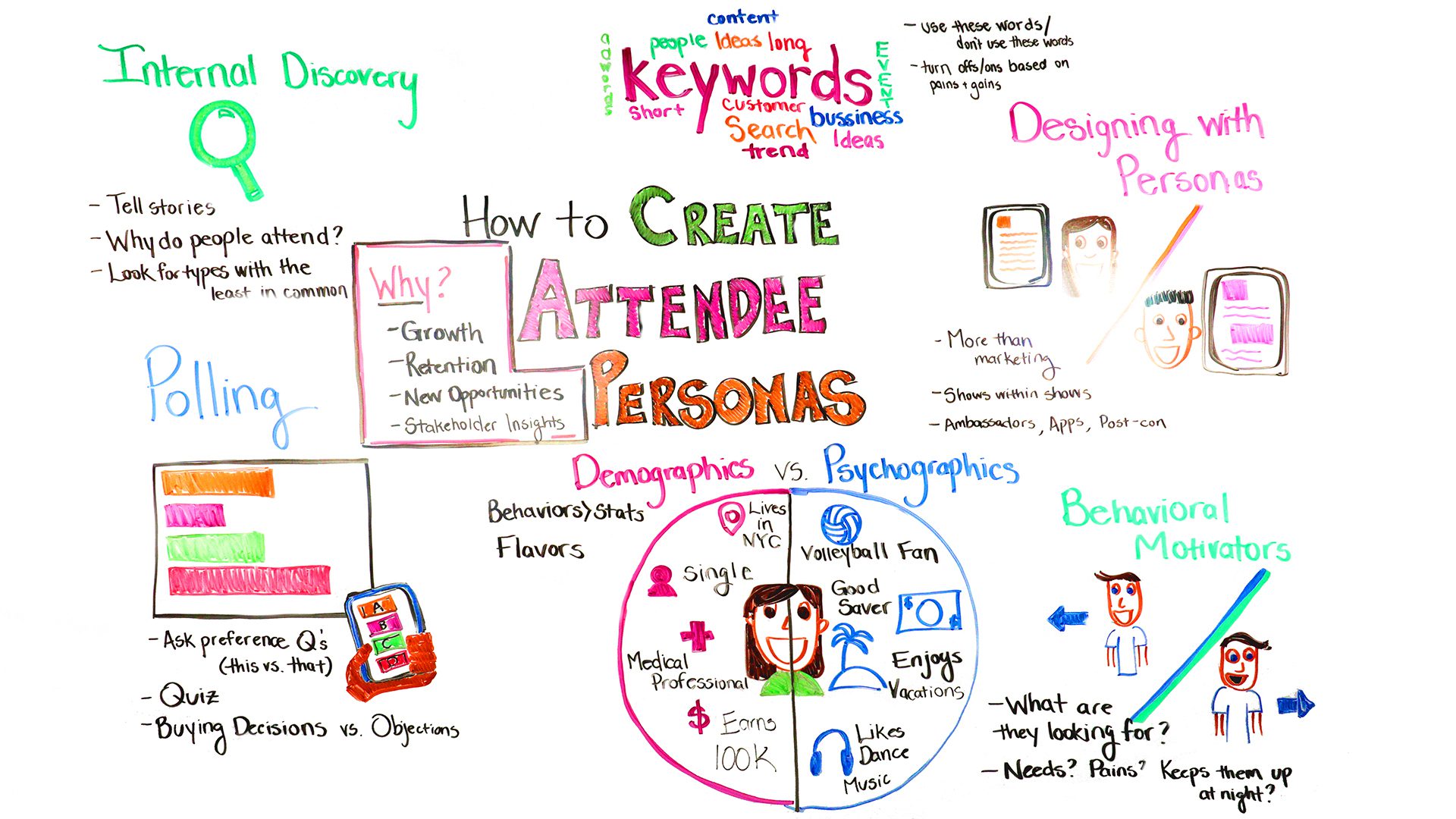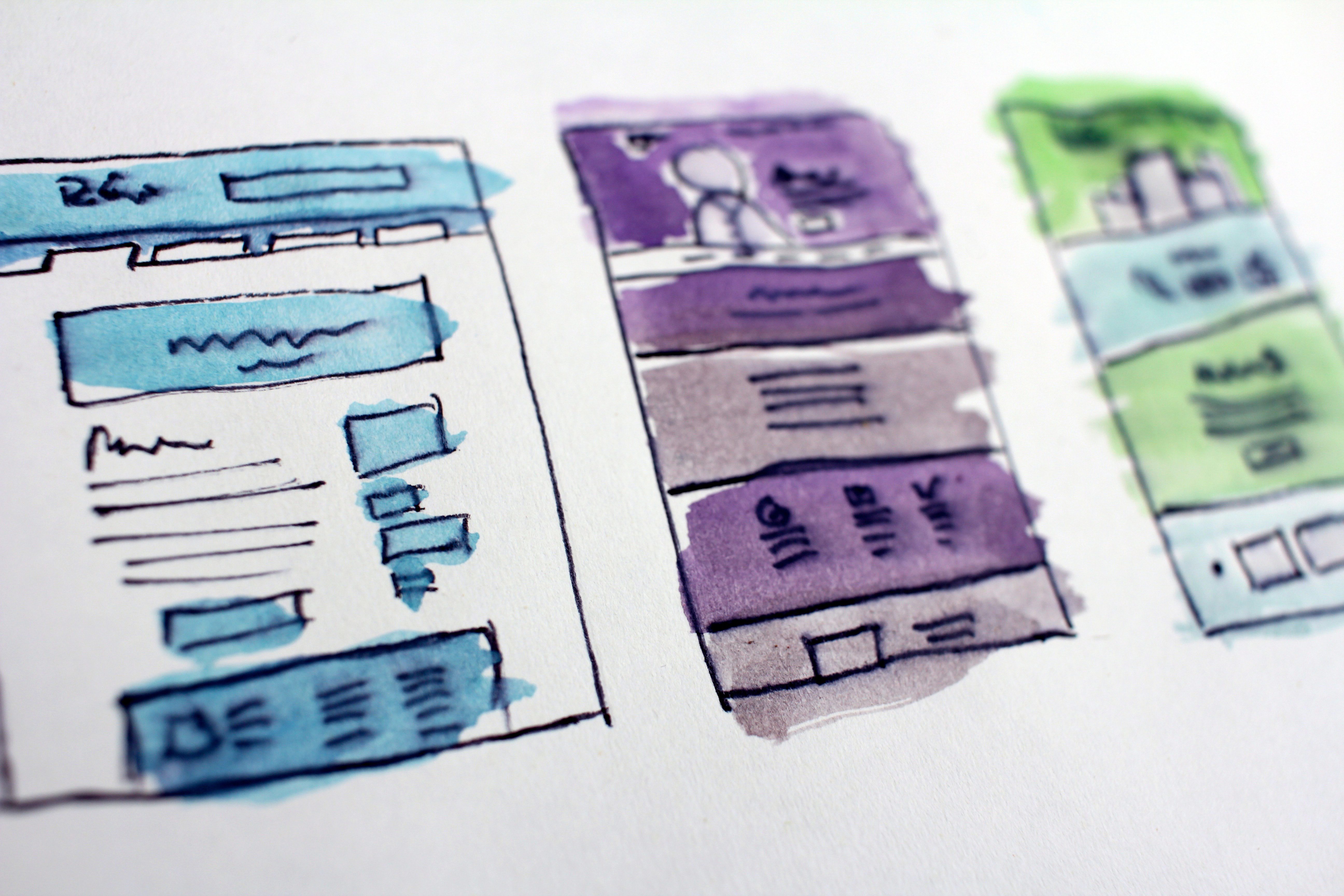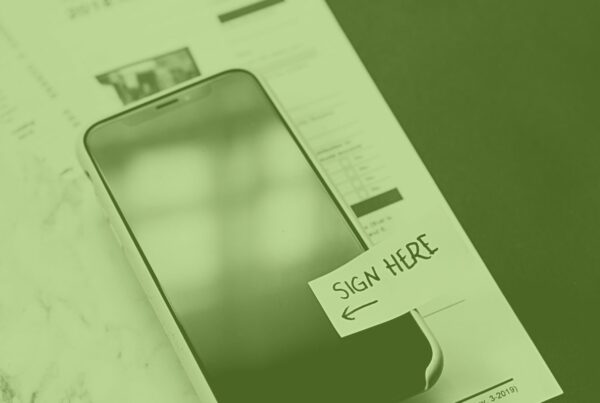Everybody say attendee personas! And everybody say Whiteboard Wednesday! That’s right, it’s time for a brand new episode, and this time around, we’re tackling a very exciting topic. Because you’ll have different kinds of people attending your events, it’s important that major focus is put on them. How well do you really know your attendees? And how much effort do you put into designing specific personas that will help you drive more engagement and create amazing experiences?
Well, this week’s edition is here to tell you everything you need to know. Our host Nick Borelli walks you through the entire process of creating attendee personas. So you can start driving growth, customer retention, and create unforgettable moments. And everything at once! Without further ado, let’s move on to Nick. Start taking notes, it’s Whiteboard Wednesday o’clock!
 Video Transcription – How To Create Attendee Personas
Video Transcription – How To Create Attendee Personas
Hi, this is Nick Borelli and I’m at Whiteboard Wednesdays. I’m really excited to be talking to you about an area that I spend a great deal of time on, and that is attendee personas. Attendee personas might be something that not in your lexicon. You might not be using the idea of personas in your marketing and your design, and I’m going to help you do that. One of the most important reasons why we do that is for growth, retention, new opportunities, stakeholder insights. These are all things that personas can really build on, but really it’s about diversification. The same message going to everyone is not going to resonate nearly as much as different messaging that is aimed at very specific types of people with the behavioral knowledge that you have. So if you think you’re going to accomplish any of these things by one message, just louder or more frequent, you’re not going to. You’re going to hit a plateau eventually.
Attendee Personas – Who’s Coming To The Party?
That’s really key, is to figure out all the people. Then in a Venn diagram of your event, being the circle in the middle and all the other circles of reasons and types of people that attend your event, it would be the furthest away. Because what you want to do is, you know, I could tell you let’s create a hundred different personas. Probably not going, I mean, you could, but probably not going to be very manageable to split your marketing in a hundred different directions. So figure out a number and a frequency that is something that you’re comfortable with. And having all these strategies that are different from each other. What’s the amount that it can be different, and if you’re going to ask me what that magic number is, hard for me to say without knowing your assets. But I can tell you that there’s really no wrong place to start when it comes to creating personas. And there’s no number that’s too small. Probably less than four is probably not good, but in general, you want to start somewhere and you want to get momentum. Because once you start seeing the actual results of splitting your messaging, you’re going to want to do it more. And you’re going to be able to do it more because you’re going to have more information.
Polling
So that’s why you do it, and that’s where you start. But after you get a feel for who these people are anecdotal, right, you know these stories of people, you can start loosely sketching out the ideas of these people. Then you start to add a little bit more data that makes it a little bit more real, right? One of the easiest ways to do that is polling, and then you can ask lots of questions that are related to preference. I find that this is a very useful trick when it comes to understanding behaviors. What would you prefer, this or that, this or that? It’s like when you get an eye exam, is it A, is it B? You know, that kind of thing. And what it’ll tell you is if they’re down a path where they have the opportunity to go left or right, like a Robert Frost poem, you get to know, okay, well they would go right. And once you start to see these patterns, then what emerges is verifiable results along the lines of consistent behaviors, and then you start to, again, formulate a little closer to what these personas are that are related to your event.
Quizzing
I also like quizzes, those personality quizzes you might’ve seen hit the news in this organization called Cambridge Analytica that eventually ended up impacting the election a little bit, got in the news. There’s a lot rooted in that that actually does work. In fact, I just did one for an association, and it allowed people to self-select the persona that they’re in. At the end of it, it told them what kind of leader they were. You can come up with a bunch of different ways to determine, like forward-facing, what they would see. But the bottom line is they actually could input directly to themselves if they prefer. If they’re attending this event because they’re looking for a mentor, a mentoree, education, et cetera, or they’re introverted, they’re extroverted, they’re hybrid. All these types of questions that allow you to fill out and test what you’ve got leading up to here, it allows you to give you just that much more information.
What Ticks Your Attendee personas?
And the last bit is utilizing what impacts their buying decisions and what do they object to. More often, you’re going to see me talk about this idea of the positive and the negative. These are big parts of persona building, is to determine what turns them on and what turns them off, but really it’s the conversion variable that’s really most important. What converts them? What pushes you over the edge? If you saw this, then you would do this. If I know that I can get this, I’ll always do that. Those types of questions and polling are really important because it tells you the one thing that they’re looking for in order to get the most amount of value.
Demographics And Psychographics of Attendee Personas
So next we’ll have a little discussion about the areas that I think there’s the most confusion about. And that is the idea of demographics and psychographics. Now, I don’t necessarily know if a lot of people are going in saying, “I’m confused between those two things.” I think what they actually think is they only know about this, and they think that personas are built up exclusively of this. So they’ll say, “Well, one of my personas is millennials. Another one of my personas is CEOs.” Those aren’t personas. Those are segments, and those segments are based on demographical information. I will tell you that I know 60-year-olds and 23-year-olds whose behaviors have more in common than all six-year-olds have in common. Or all 23-year-olds have in common. What matters the most is understanding what makes them change and what behaviors they’re looking for. In order to reach them completely, and that is certainly a part of what’s in here. On average, let’s say senior-level management makes decisions based on this on average. But there are a few ways you can split that that makes them maybe more with this group or more with that group.
Flavorful Attendee Personas
But this isn’t a monolith, nor is anything under that, right? Like anyone who lives in New York City doesn’t all act that way. I mean, as you know, a New York City person, you could say, well everyone in New York City, they all rush into people, and bump into you, and don’t say they’re sorry for it. Yeah, but there’s so much variety in New York City, to pigeonhole people into one narrow hole like that is disingenuous, and frankly isn’t that valuable of information to know. Once you start looking at the things that make them who they are, the psychographics, the stuff that they like, their preferences, the way they see the world, those types of things, coupled with this, gives you a pretty clear picture of basically the flavors of who they are. So keep in mind, I guess the most important lesson here is that behaviors are more important than statistics.
Behaviors
Moving on down, there’s these, this idea of behavioral motivators. In behavioral science, it’s called nudges. What could nudge somebody over? Because we’re trying to change behaviors. We’re trying to change behaviors in letting or having people come attend our event, to buy our product, to buy our service, but ultimately the majority of this information is used to push people in the right direction, and we need to know what they’re looking for in order to do that. So when you understand what motivates them, where they see the most amount of need in their life, the biggest deficits of things in order to complete who they are and their mission, better for you to understand how to reach them.
What’s Bothering You?
Pain is a big part of it too, right? If you’re going to create a persona, you need to know what in their world right now is keeping them from reaching their potential. And when you do that, you can build different paths in order to get them somewhat. So if someone’s a C-suite or someone just started their career, and you want them both to attend your event, there isn’t a message necessarily that’s really that great that you could say that you could aim at both of them to reach them. So instead what you do is, okay, this one is missing this part in their life. They don’t understand at the senior level new technologies, social media, that kind of stuff. They’re just so unsure about that. Meanwhile, down here, someone beginning their career, that’s intuitive. They understand social media, technology, no problem. Just don’t know how to get actually up here. Looking for mentors, they’re looking for the trajectory, right?
Now these two people could help each other out a lot, but in order to get them to the live event where they can meet and help each other out, you need to say, okay well, there’s the types of people you need up here and vice versa, the people you need here, and the content that will bridge the gap in order to get you together at our event. And that’s why you need to go to learn this, and that’s why you need to go to this. So the parallel messaging really is the best way to accomplish our goals.
Attendee Personas And Live Events
The next thing that’s my favorite part of personas is its impact on live events themselves. So not just the marketing, not just increasing attendance, but actual design implications. When you do that, you have the opportunity to really infuse the personas in everything you do. You should have someone on your team who really is the cheerleader and champion of the personas and asking every step of the way, yeah, but how can we split this to make this more appealing to different personas? To give you an example, apps. I see event apps all the time or wayfinding, it used to binders, that’s how old I am. And they would tell you, okay, there’s what you should be doing if you’re a sales executive. Here’s what you should be doing if you’re an entrepreneur if you’re a marketing person, et cetera, and they did these tracks based on your job title, which we saw right here is really just your demographics.
I Know Exactly What You Need!
Now that you have a better understanding, because you’ve done this work here, the flavors of who they really are, what they’re about, what they’re missing in their lives, what they want to get out of this live experience, what you have now is the ability to reach them in a way that is based on behaviors, not just based on their job titles. So you can create a track based on evolving professionals, right? So they’re in the middle of their career. They still want to advance. However, they have trepidations around 101 content being too, you know, a waste of their time. But on the other hand, there’s sort of senior-level stuff that they’re not really into yet. So you can create some things on what they’re missing and what they need based on the persona information that you have, and suggest to them within the app, okay, if you’re this kind of person, here are the things you should go to. If you find that there’s a lot of introvert tendencies, you might suggest a library option where there’s a bunch of books they could check out, or they could take some information via video and on-demand video portals, which I see at events more frequently now.
The Path To Creation
There’s lots of opportunities once you start to say in each design phase, well, okay, how do we satisfy this group? And maybe you don’t satisfy all of them with that, but then you can start creating these paths that are based more on the people and what makes the people human than simply their job titles. I find that to be something that’s really exciting, and then you have the opportunity to then maybe infuse some influencer marketing and find people in your community who could be influencers, and select them as not necessarily by the people with the most amount of followers, but select them as people who represent each one of your personas. Now they’re the kind of avatar, the arch attendee of that persona, and you can do a lot of things with them. You can do that wayfinding I was telling you earlier. Now they could potentially personify that and say I would go to this and I would go to that because I’m like this and are you like that? And then you connect that way. You have the opportunity to leave them with marketing along the path prior to the event, as well.
Variety Matters
So if their message resonates, because it sounds like you, you diversify your message along with persona ways. And then after the event itself, you have the ability to do a post-con with this group of people who represent all the different types of people. Who attend your event, and you can ask them directly, what did you think about this? What did you think about this? And they might have found different things from it. Ultimately, not everyone’s going to agree, but you’re going to have a little bit more of a variety, of a tapestry, of how people react to your events simply than just a binary I liked it, I didn’t like it, from the same person, right? Which isn’t that valuable.
Persona Keywords
So I think that there’s a lot of opportunities to incorporate the personas in the design at every phase of an event. And then when it comes to the real practical, tactical stuff, I always include keywords with the personas. These are the words and phrases that once all you have all this information here, turns them on and then you can use most frequently. So when you’re deploying, say, a social media calendar, an email strategy, content marketing. You know, okay, when we have certain pieces of content that is going out that’s aimed at one persona. They need to include these phrases every single time. They need to include something, one of these words, a couple of these words and subject lines, et cetera. Because these are the things that they use to say if this is going to be something that they attend or not. That’s the thing that gets their attention. And you can test this stuff over and over again, and do AB testing and ads, lots of different things to refine these, to make these better.
Strategizing!
Once you find these out, then you can find out what the flip side is. What are the turnoff words, the negative keywords and online advertising parlance? Once you can have this really solid picture, then you can have this culture. That includes keywords and includes design, a culture that says we don’t design events for one attendee anymore. We design events that appeal to a number of different types of attendees within our community. And we do it differently. Because I think that with the rise of personalization, what people want out of an event more than anything right now is they want the event to be exactly for them. They don’t want to compromise. So with personas, you now have the ability to split your event into what feels like lots of events taking place under one event, because you’ve designed it with that information in mind.
Conclusions
So hopefully that helps you understand why you should be adopting personas, where you can use them, and how you acquire them in order to enhance both your marketing and design of your events. If you’re interested in more information about this, we can definitely talk about it below. I would love to know how you are using personas and some of the personas you’re actually using right now, if you are, below. I am very fascinated in the different ways that people are doing that because I am always learning myself. And don’t forget to like and subscribe to Whiteboard Wednesdays, and we’ll look forward to seeing you next week.










